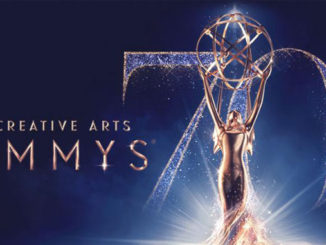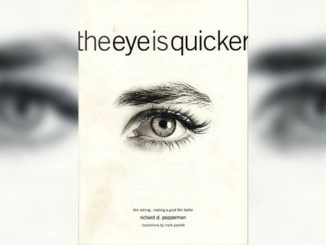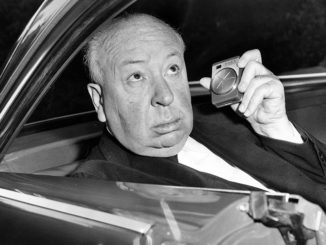
by Norman Hollyn
It wasn’t so long ago, it seems, that editors spent most of their time in editing rooms simply editing. Many of us remember the days when we spliced pieces of film together, drew dissolve marks on the celluloid with grease pencil and projected our work picture with only a single audio track for directors, producers and studio executives.
Then digital editing came along and dissolves became as easy as hitting the backslash key, and we were routinely expected to work across eight or more audio tracks, adding sound effects and temp music tracks to help tell our version of the story to those very same directors, producers and executives.
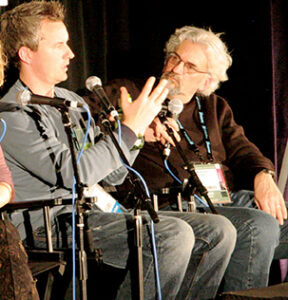
In recent years, the sheer amount of work that editors can accomplish in their editing rooms has jumped exponentially. This trend has now reached lower-budget films as well, and for Jason Stewart, editor of the feature film World’s Greatest Dad, which premiered at the Sundance Film Festival in January, he’s happy to be able to use these tools to tell his stories. In an interview at the festival, he discusses his skill set, and how it comes in handy as an editor.
Stewart, who has worked on narrative features and some of the top Reality television shows, was a painting and art major at the Academy of Art in San Francisco when he first became interested in editing. Later, he worked as an assistant editor at a commercials house in the area, but when he moved to Los Angeles and started looking for work, he felt like the skills he could bring to assisting were somewhat limited because the commercial workflow was fairly simple. “We would go through the footage, break out the takes, organize the bins, get the thing ready and do some outputs,” says Stewart. “But we weren’t doing a lot of the day-to-day hands-on stuff.”
When he started assisting on Reality television shows, he was able to expand his skills a little. “The assistants are mainly loaders––they load and label,” Stewart explains. That was the end of it. They might do some prep work and string some things for an editor to look at, but all they have time to do is digitize, organize, label and hand it over.”
It was as an editor in Reality TV that Stewart began to develop his abilities to look at material and “see possibilities in the footage that aren’t obvious.” This helped him impress director Bobcat Goldthwait when he first worked with him on his 2006 Sundance film Sleeping Dogs Lie.
But Stewart’s transition to editing narrative films was not without worries. “I was afraid I would need to know a lot of things I didn’t already know from Reality that would apply to cutting scripted material––the proper technical way to cut scenes together and how to organize your movie,” he confesses. “But it was the same approach; I would get the footage together, organize it and string it together. It was a straight cuts movie, there was nothing fancy about it.”
However, there were key techniques with visual effects that Stewart had learned, which became more useful to him as time went on. “Reality tends to be a lot more effects-driven than a lot of people think, especially because a lot of us end up doing teasers and promos,” he says. “You work the whole effects palette for whatever its worth, and eventually we get into things like Boris and other packages. If you watch an active Reality TV show with the teases and main titles, it’s cut like a commercial.”
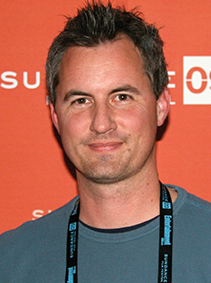
He began to use some of this expertise as he was editing low-budget science fiction films. With six-week editing schedules, he took models of monsters that had been provided on stills and was able to create mock-ups of the action of the monsters. This allowed him to lock in the timing of the edited sequences much more efficiently.
Stewart’s art background helped him in other ways. “Some projects called for a temp color correction pass just to get it to a festival deadline,” he explains. “In many cases, if I am working on something that’s Sundance-hopeful, they’ll do this ‘Oh let’s just throw it together real fast and get it as pretty as we can and shoot it off to the festival’ version as a submission. So I am fairly comfortable doing a down-and-dirty color correction just to set a look.”
The editor was able to use his visual effects and color-correction expertise as a way of experimenting with parts of the editing process that are normally left to others and often pushed to the end of the process. This ability to use the tools during the early editing can help deepen the communication between the editor and the director.
“For a while we thought that we wanted to give World’s Greatest Dad a The Squid and the Whale-kind of somber earth-tone vibe,” Stewart reveals. “So I went into the color-correction tool in the Avid and did a few scenes that were of that look just as a test. I find it helpful to be able to bounce look ideas around.”
Stewart also used a variety of the sound tools in his system to help him experiment for screenings for family and friends that he and Goldthwait held at a mixing stage. “We would watch our QuickTime movies in these rooms almost weekly and so I found that I needed to do a good ‘mix pass’ first; every little thing stood out,” he says. “I would be mixing for that room and then also looking at the color correction.
“This is something that translates back to Reality TV,” Stewart continues. “I’ll build and finish shows, and my cut’s the one that the executives are going to see, so a sound pass just using the mixing tools that are in the Avid has to get done before anything goes out. The assistants generally don’t do that; that’s not some- thing that’s in their skill set and if it was it might take too long––you’re up against these great crazy deadlines and it has to get done.”
Stewart feels that this is becoming more of a requirement, especially with films that are hoping to get into festivals, although any editor who has had to submit a cut to a studio executive will understand this need. “The film needs to be good enough to screen now,” he states. “It not only needs to be edited well––the story needs to flow and be good––but you also need to be able to say, ‘Hey, in two days we’re going to go to Fox and screen this for some people.’ So there’s a scramble to make it good enough to throw up on a fairly good-sized screen. We cut in DV25 so we were able to project large and it looked crisp enough to project.”
He also carries a hard drive around with him from job to job, with a collection of sound effects and movie soundtracks loaded into iTunes that he uses in his editing.

He was able to utilize the full 16 audio tracks available to him on the Avid to mix walla and hard effects to help to tell his story. He has a similar approach to music.
Stewart is obviously comfortable using the tools that are available to him, being more technologically savvy than others are. But he feels there is also a downside to that knowledge. “The smaller the budget, the less staff the producers feel they need or can afford,” he explains.
Regardless, Stewart feels it is essential to know these additional tools. “I’m really a believer in knowing more than you think you’re going to need to know,” he says. “For students and people who feel they’re going to fall short in certain skill sets, I feel like you need to get interested in some third-party type applications. It could come to a situation where you’re told, ‘Our visual effects house isn’t selected yet, but we need to do this now; can you do that, kid?’ And if you can say, ‘yes,’ it’s helpful to them. My hope is that producers––even small indie ones––will get savvy to the fact that to have things done properly, you need a really strong assistant who understands how things need to come in and go out––the entire workflow. Everything is new every year and the editor and the assistant have to be up on that––big time.”
It is the aesthetics of his work that Stewart feels are an editor’s strongest asset. “Clearly, it’s all about storytelling, and that’s the kind of thing that not everyone can do,” he concludes. “Experience is the best teacher of that, and I think that every decade I put into this, I’ll be able to say that I’m a smarter storyteller and a more unique one than I was before. So as long as I am open to that, I think I am going to be fine.”


